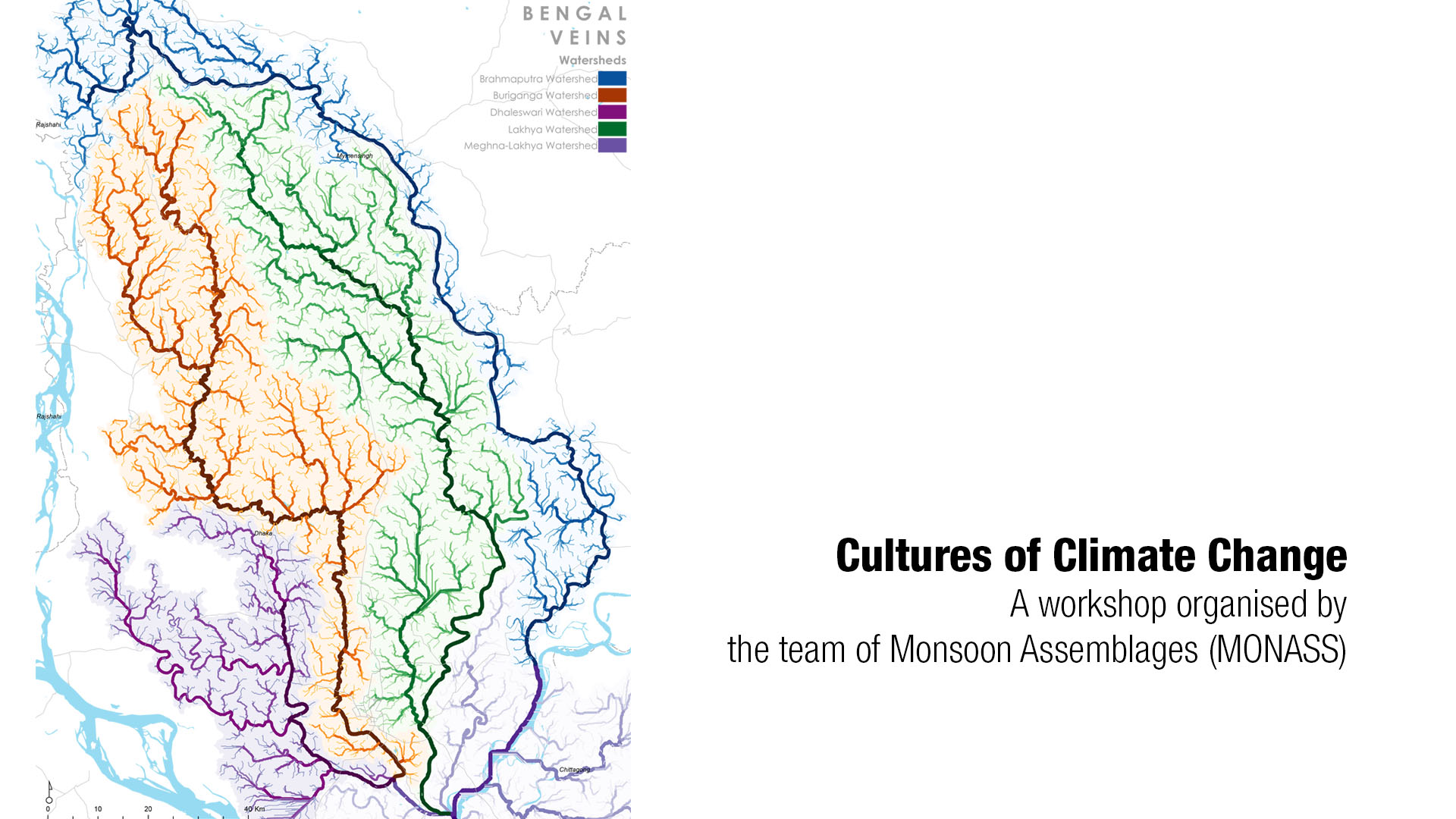

Bengal Institute for Architecture, Landscapes and Settlements participated in a workshop titled “Cultures of Climate Change” organised by the team of Monsoon Assemblages (MONASS) on 25th March, 2021. A team consisting Saif Ul Haque, Director, Research and Design Program and Mohammad Arfar Razi, Sr. Research and Design Associate from the Research and Design team of Bengal Institute had been two of the facilitators for the workshop.
In the 40-minutes break-out session of the workshop, the team had worked on brain-storming some ideas sparked from a question titled “How can hydro-geographic concepts such as basin, watershed and fluvio-geomorphic region be the basis for the design, planning and management of megacities in monsoonal climates?” Participants from various disciplines around the world attended the workshop.
The question of how the monsoon affects megacities, and how appropriate adaptations can be made for design and planning were brought up by Arfar Razi, senior research and design associate at Bengal Institute. He put emphasis on the concepts of hydro-geographic aspects of Dhaka city, to better identify the problems and solutions unique to the Ganges delta. Particularly for regions influenced by monsoon and monsoon flooding, water is a key-point of city planning. He pointed out that during heavy rain, water drainage paths are defined by terrain. Therefore, it is important to analyse the watershed of streams while considering the planning and management of megacities.
So what should be the approach to the management? To this question, Zachary Lamb, assistant professor at UC Berkeley, pointed out that the most pressing issue is the disconnection between seasonal variation and the static development of urban planning. In reality, cost of land and social structure influences the elements of landscape. Sudarshan Pani, a student of Amphibious Living at Bangalore, focused on the requirements of consideration of changing dynamics of a region in building structures, and understanding of the perspectives of local communities. Maddalena Laddaga, research associate at the University of Westminster, emphasised on the consideration of the growth rate of mosquitoes with flooding during urban planning. Zachary Lamb further added that instead of putting strict restrictions on how and where not to build, rather the planning approach should be focused on how to facilitate urban growth. The importance of supporting the coexistence of humans in the physical environment, and their adaptation to the monsoon climate should be recognised. Saif Ul Haque, the director of research and design program at Bengal Institute, said in his concluding remarks that even though the governing entities and planning industry at large use the land values to dictate the planning decisions, active actions and more research should be conducted to tackle the pressures of development.